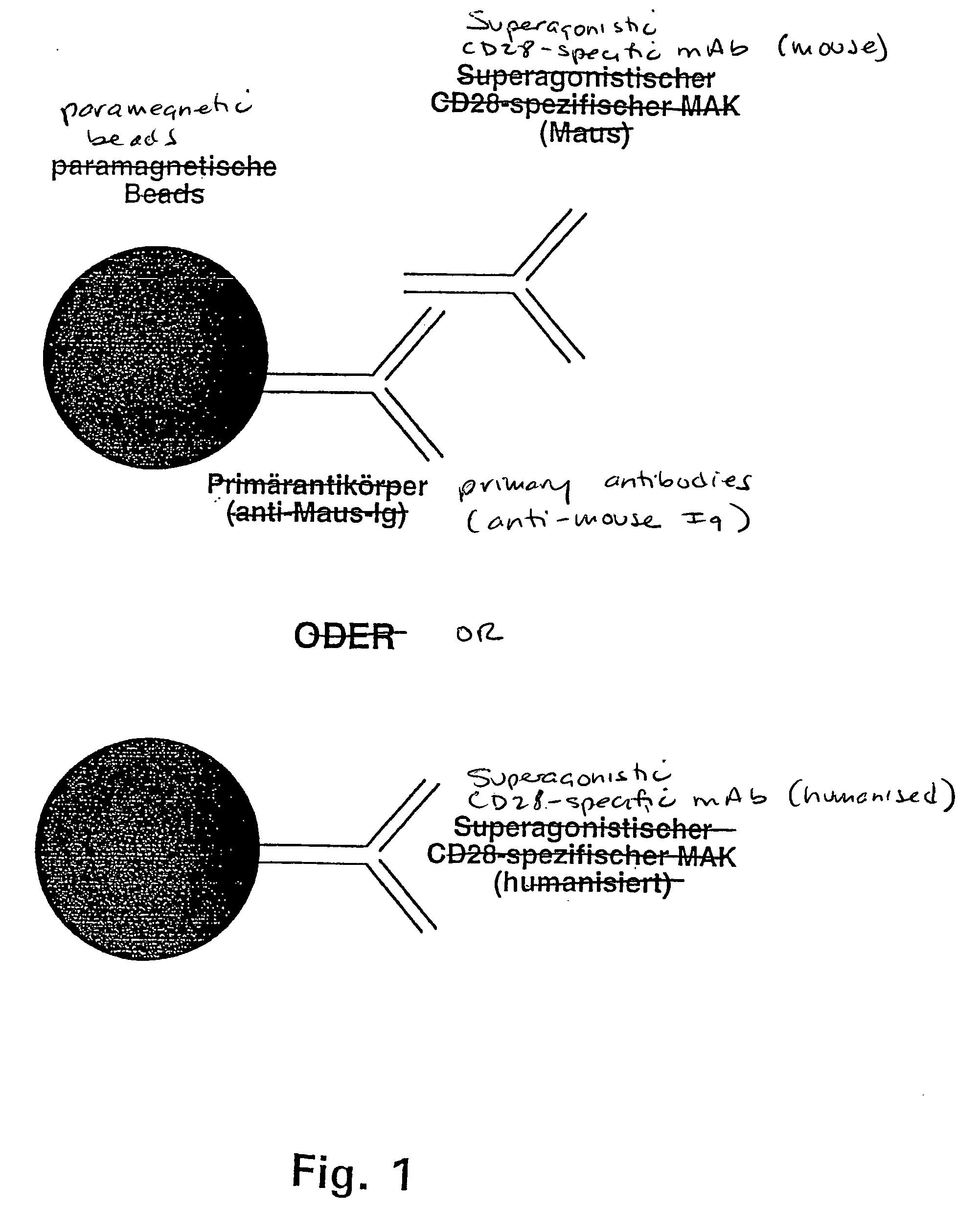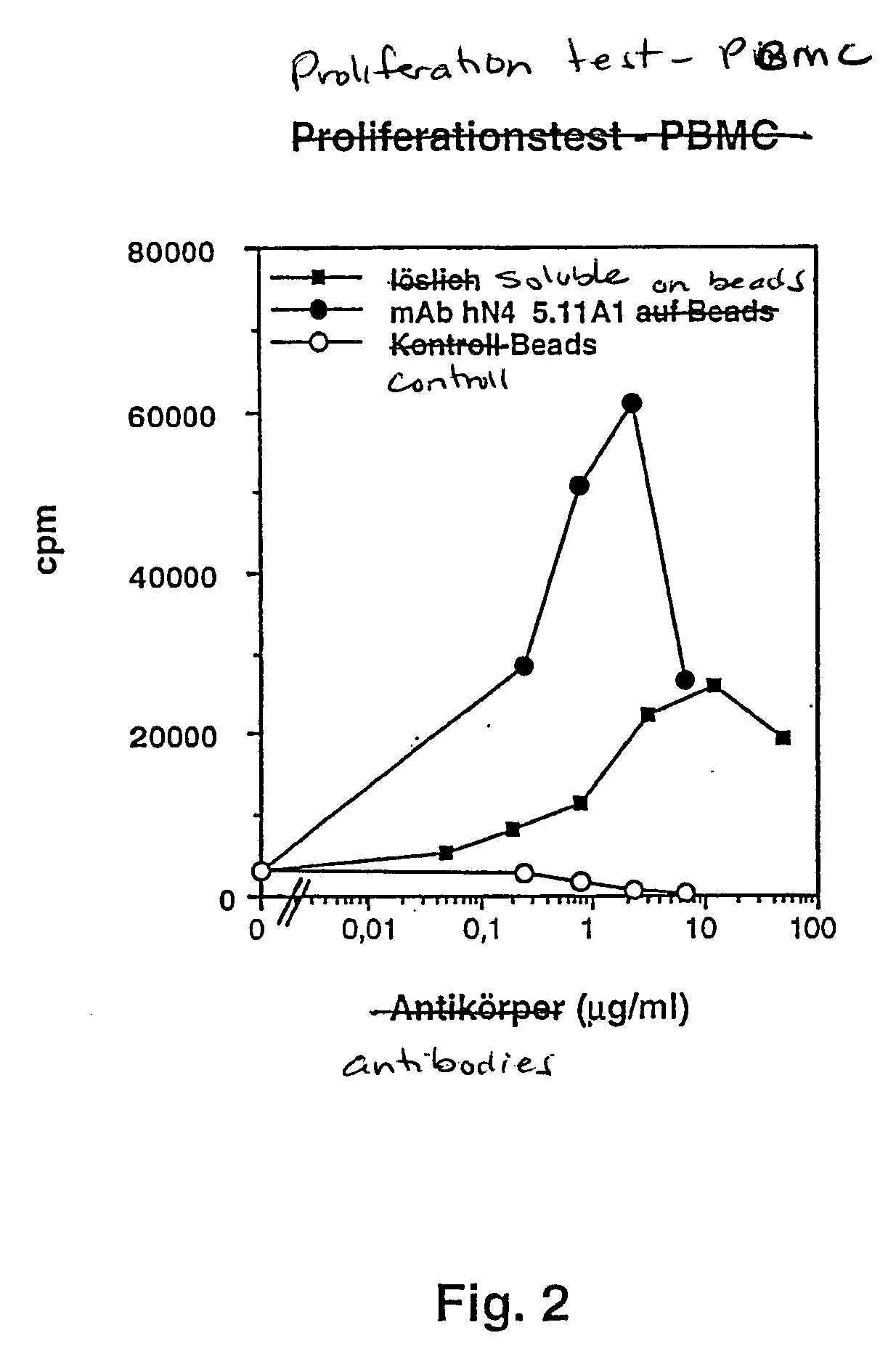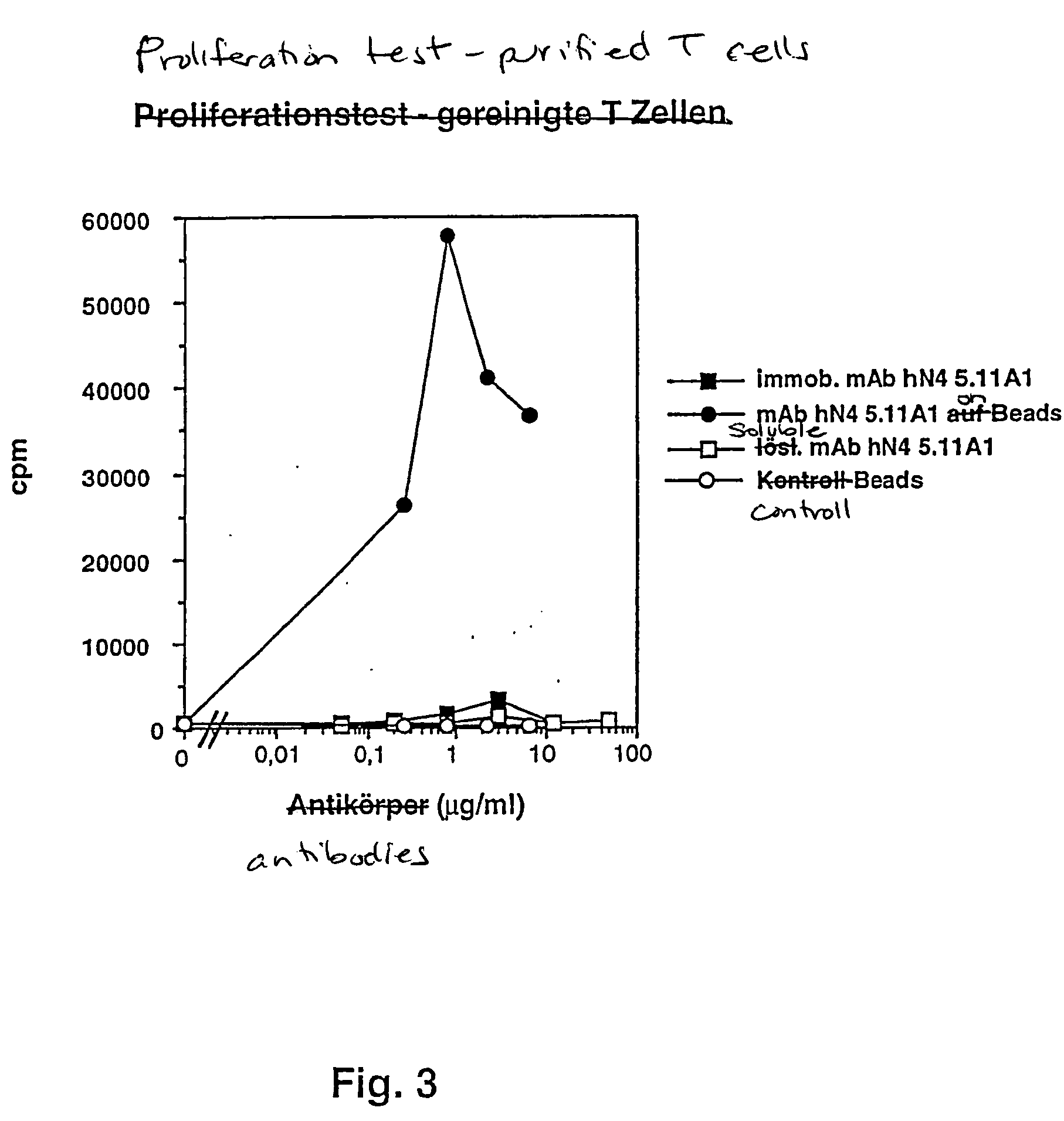Microparticle with cd28-specific monoclonal antibodies
a monoclonal antibody and microparticle technology, applied in the field of microparticles, can solve the problems of fc receptor dependence, t lymphocyte stimulation by superagonistic cd28-specific mabs, and the need for two different substances
- Summary
- Abstract
- Description
- Claims
- Application Information
AI Technical Summary
Benefits of technology
Problems solved by technology
Method used
Image
Examples
example 1
Direct Coupling of mAbs to Magnetic Beads
[0039] Surface-activated magnetic beads supplied by Dynal (Dynabeads) are used. The surface of the beads is hydrophobic and carries glycidylether groups. A covalent binding of antibodies takes place by a reaction of primary amine groups of the antibodies with the glycidylether groups. The beads are uniformly shaped, superparamagnetic spheres with a core of γFe2O3 and Fe3O4, which is coated with a polystyrene envelope. The average diameter is 4.5 μm. The density is approx. 1.5 g / cm3. The surface area is 1 to 4 m2 / g beads. The geometric surface area is 6×10−4 m2 / 107 Dynabeads (approx. 0.9 m2 / g). The magnetic properties are not relevant for the invention, assist however in handling during a preparation.
[0040] The desired number of beads is taken from the obtained suspension after thorough mixing of the suspension (Vortex, 5 min). The vessel with the beads is placed in a magnetic holder (30-60 s) , thus the beads being pelletised. The supernat...
example 2
Indirect Coupling of mAbs to Magnetic Beads
[0044] In principle, an analogous approach to Example 1 is followed, with the only exception that anti-mouse Ig Dynabeads are used. These are beads, at the surface of which sheep anti-mouse immunoglobulin is covalently coupled. As a coupling buffer, a phosphate-buffered physiological common salt solution (PBS) is used. As mAbs were employed mouse anti-human CD28-specific superagonistic mAbs, which can be obtained from DSM ACC2530. The specificity fully corresponds to that of the mAbs used in Example 1, since agreement exists in the antigen binding regions. To the immunoglobulin binds the used mAb in a non-covalent manner according to FIG. 1.
example 3
In Vitro Stimulation in a PBMC System.
[0045] Per well of a 96-well plate were cultivated 2×105 PBMCs (peripheral blood mononuclear cells, i.e. T lymphocytes, B lymphocytes and monocytes) in 0.2 ml RPMI 1640 culture medium with 10% autologous serum. From day 2 to day 3, a 16-hour pulse was performed with 1 μpCi 3H thymidine, whereupon the thymidine incorporated into the DNA was measured as a proof for the proliferation. The results of FIG. 2 compare the capability of the humanised superagonistic mAb hN4 5.11A1 to stimulate unseparated human pBMCs (i.e. a mixture of T lymphocytes and Fc receptor-supporting non-T lymphocytes) in a soluble form compared to a bead-coupled form. On the abscissa, the antibody amount in fact introduced into the system (in a soluble form or bound to beads) is shown. The ordinate shows the incorporated radioactivity as a measure for the proliferation. This representative experiment clearly indicates that firstly the antibody coupled to beads induces in an o...
PUM
| Property | Measurement | Unit |
|---|---|---|
| Diameter | aaaaa | aaaaa |
| Diameter | aaaaa | aaaaa |
| Diameter | aaaaa | aaaaa |
Abstract
Description
Claims
Application Information
 Login to View More
Login to View More - R&D
- Intellectual Property
- Life Sciences
- Materials
- Tech Scout
- Unparalleled Data Quality
- Higher Quality Content
- 60% Fewer Hallucinations
Browse by: Latest US Patents, China's latest patents, Technical Efficacy Thesaurus, Application Domain, Technology Topic, Popular Technical Reports.
© 2025 PatSnap. All rights reserved.Legal|Privacy policy|Modern Slavery Act Transparency Statement|Sitemap|About US| Contact US: help@patsnap.com



